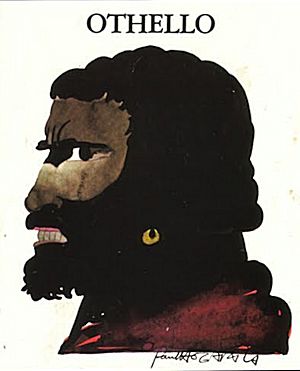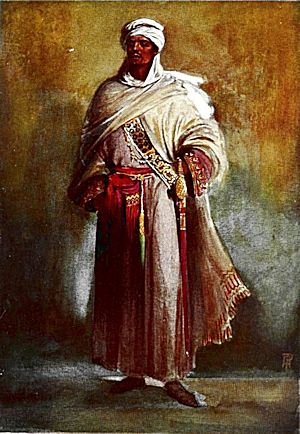|
Playlist Othello | Dramatis Personea | Sitemap Scenes The story of Othello appears to have been taken from the Heccatommithi of Giraldi Cinthio, an Italian novelist, first published at Monte-Regale, in Sicily, in 1565. The tale is short, not longer than a single act of Othello, and the following is an outline of it: There lived at Venice a valiant Moor, held in great esteem for his ilitarytalent and services. Desdemona, a lady of marvellous beauty, attracted not by female fancy, but by his high virtues, became enamoured of the Moor, who returned her love, and, in spite of the opposition of her relatives, married her. They lived in great happinessin Venice until the Moor (he has no other name in the story)was chosen to the military command of Cyprus, whither his wife insisted on accompanying him. He took with him a favourite ensign, a man of great personal beauty, but of the most depraved heart a boaster and a coward. His wife is the friend of Desdemona. The ensign falls passionately in love with Desdemona, who, wrapped up in love of her husband, pays no regard to him. His love then turns to bitter hate, and he resolves to charge her with infidelity, and to fix the Moor’s suspicions upon a favourite captain of his. Soon after, that officer strikes and wounds a soldier on guard, for which the Moor cashiers him. Desdemona endeavours to obtain his pardon; and this gives the ensignan opportunity of insinuating accusations against her, and rousing the Moor’s jealousy. These suspicions he confirms by stealing from her a favourite wrought handkerchief, and leaving it on the captain’s bed. Then the Moor and his ensign plot together to kill Desdemona and her supposed lover. The latter is way laid and wounded in the dark by the ensign. Desdemona is beaten to death by him also “with a stocking filled with sand”; and then the Moor and he attempt to conceal their murder by pulling down the ceiling, and giving out that she was killed by the fall of a beam. The Moor becomes almost frantic with his loss and turns upon the ensign, whom he degrades and drives from him. The ensign revenges himself by disclosingthe murder to the captain, upon whose accusation to the senate the Moor is arrested, tried, tortured, and then banished, and afterwards killed by Desdemona’s relatives. Shakespeare owes to the tale only the general outline of his plot, and the suggestion of the character of Desdemona, which, however, he has elevated as well as expanded. He is also indebted to Cinthio for the artful insinuations by which Iago first rouses the Moor’s suspicions. But all else is essentially the poet’sown. Cinthio’s savage Moor and cunning ensign have scarcely anything in common with the heroic, the gentle, the terrible Othello, or with Iago’s proud, contemptuous intellect, bitter wit, cool malignity,and “learned spirit.” Cassio and Emilia owe to Shakespeare all their individuality; Roderigo, Brabantio, and the rest are entirely his creation. — Othello, the Moor of Venice – Edited with notes by William J. Rolfe – Cambridge Massachusetts 1904 |
|


